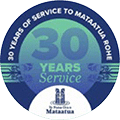Kaumātua Kōrero
Hemana Waaka
Mā mua ka kite a muri, mā muri ka ora a mua.
- Home
- Kaumātua Kōrero
Hemana Waaka
Hemana Waaka started his career in the New Zealand Army, serving continuously for 20 years at overseas deployments such as Malaysia, Singapore and the South Pacific.
After retiring from service, Hemana has remained involved and supported the New Zealand Defence Force and veterans through researching, advising and advocating. He is currently the president of the Te Teko Returned Services Association.
Hemana has experienced first-hand and learned about how te reo Māori and tikanga Māori were upheld and maintained during conflicts overseas. He is also knowledgeable in how the New Zealand Defence Force honours te ao Māori, today.
This series showcases Hemana and his learned knowledge, his personal experience and his hopes for the future, for Māori representation and culture within our national defence force.
Many Māori we deployed to the Malayan Emergency (1948-1960) where te reo Māori was predominant, particularly between soldiers who were fluent speakers.
In 1955 The first Māori Special Air Service (SAS) troops headed to Malaya. Followed by the first Māori and Pākeha battalion in 1957. Every two years after that the battalion changed. But what didn’t change was their base, each battalion was based in the jungle.
It was this environment that the term “kei ahau tō tuara, kei a koe tōku tuara” was derived, a common term using during this conflict, when soldiers developed a comradeship and became whānau. According to Hemana, it was this comradeship and whānau that kept everyone alive.
It was also during the Malayan Emergency that kapa haka was introduced as a way for soldiers to remember home.
The marae, Tūmatauenga, was a te roro o te whare, a porch with carvings on the outside. When Hemana arrived in Malaya in 1966, the carvings were plastic moulds pinned to the wood as a replica of the wairua of a marae.
Tūmatauenga Marae at Terendak Camp was where New Zealand soldiers performed kapa haka for visitors and VIPs. During this time, kapa haka was for entertainment purposes only.
Joining the army was a career for Hemana, who soon found himself losing his cultural identity due to the focus on the job, the job that didn’t include tikanga Māori.
This was something they knew, as Māori soldiers and it was up to the individual to maintain their cultural identity.
Hemana maintained his reo and tikanga through humorous banter with other soldiers, particularly those from Ngāi Tūhoe, and through karakia and waiata with kapa haka.
Kapa haka remained a form of entertainment for 19-years, when Māori soldiers were based in Malaya and Singapore with the battalion. The sound of te reo Māori was less than two-percent throughout that period. That two-percent was kapa haka and the only te reo Māori heard.
To Hemana, the government of the time breached Te Tiriti o Waitangi on multiple occasions during the different conflicts Māori soldiers were involved in. He has completed extensive research and has ongoing claims with the Waitangi Tribunal. Hemana is assisting the New Zealand Defence Force with how tikanga breaches should be addressed, some already having been rectified.
The New Zealand Defence Force honours Te Ao Māori through a blend of Māori and British heritage. While the military organisation follows the British system, the warrior ethos of the Force draws heavily from Te Ao Māori.
Though te reo Māori and tikanga Māori was limited during Hemana’s time as a soldier overseas, he is happy that today, te reo Māori and tikanga Māori are recognised within the New Zealand Defence Force.



